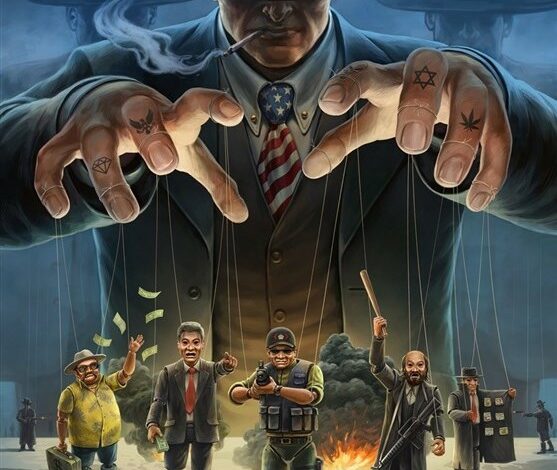Analysis of Imam Khamenei’s Statements | Iran-West Civilizational Confrontation

In the thought of the Revolution’s Leader, the conflict between Iran and the West is a historical struggle over the essence of humanity and the path of human society’s progress, and a war over identity, truth, and the future of the world.
Imam and Leadership Group at Tasnim News Agency; Jafar Hassan Khani: How is the Iran-America confrontation in the intellectual system of the Revolution’s Leader? Is it merely a political confrontation or something beyond that? It appears this confrontation has social, economic, and more importantly, cultural dimensions, although it cannot be limited to political, cultural, social, and economic dimensions because, from the perspective of the Revolution’s Leader, the Iran-America confrontation is a civilizational and identity-based confrontation. It is the confrontation between the Iranian-Islamic civilization and the materialistic Western civilization, which have distinct and conflicting foundations, histories, and values.
The Essence of Western Civilization in the Revolution’s Leader’s Intellectual System
The Revolution’s Leader considers Western civilization to be inherently evil. His criterion for introducing the essence of Western civilization in the current era is the “genocide in Gaza.”
He believes that the events in Gaza revealed the evil essence of Western civilization, and the West’s silence and support for the Zionist regime in the killing of 10,000 innocent Palestinian children brought about the greatest scandal and historical and identity-based defeat for Western civilization, stripping it of its credibility.
Why should no one speak of Western civilization anymore?
Of course, from the Revolution’s Leader’s perspective, the inherent evil of the West is not limited to supporting the genocide in Gaza but is rooted in the separation and enmity of Western civilization from spirituality, moral virtues, and the history of colonialism, which began with imposing its desires on other countries, seizing and plundering the resources and wealth of nations, destroying the authentic cultures and identities of peoples, removing moral boundaries between men and women, and applying double standards regarding human rights, freedom of expression, and other claims of liberal democracy.
Western Foundations in the Revolution’s Leader’s Intellectual System
From the perspective of the wise Revolution’s Leader, although Western civilization may have some usable advantages, its foundations are wrong and cannot be the basis for the Islamic society’s movement. (March 8, 2025) On this basis, he has raised very important points about the foundations of Western civilization over the past year, including:
- Materialism and opposition to spirituality (March 8, 2025)
- Incorrect human rights foundations (June 22, 2024)
- Creating a sense of nihilism among the youth (September 25, 2024)
- Moral decadence (December 18, 2024)
- Opposition to Islamic values (March 8, 2025)
- Double standards in international behavior (November 2, 2024)
Iran’s Civilizational Heritage
Relying on an independent Iranian-Islamic identity, combining Iranian rationality with Islamic knowledge, resisting cultural assimilation from the West, believing in the inherent capability of the Iranian nation, and paying attention to spiritual aspects alongside material progress are among the elements that explain the Revolution’s Leader’s civilizational project against Western civilization. Over the past year, the Revolution’s Leader has emphasized protecting the Iranian-Islamic civilizational heritage against Western civilization, including:
- Richness of religious and moral knowledge: The existence of civilizational messages based on Islamic and Iranian knowledge, ultimately transforming Iran into a model of brave resistance against global oppression. (March 26, 2024)
- Rich cultural heritage: The necessity of preserving and strengthening the country’s cultural and civilizational heritage. (June 25, 2024)
- Emphasis on democracy’s foundation in religious heritage: Rejecting the claim of borrowing democratic concepts from the West by referencing Nahj al-Balagha. (June 25, 2024)
- Emphasis on preserving the Persian language: Countering the invasion of foreign languages and promoting Persian equivalents. (March 26, 2024)
- Strategic geographical position: Being at the crossroads of the East (June 25, 2024) and West and the potential to become a global communication hub. (August 27, 2024)
- Attention to authentic Iranian sports: Special attention to historical sports and introducing authentic sports like Zurkhaneh and Polo on the global stage. (September 18, 2024)
- Belief in Iranian genius: Trusting the capabilities of Iranian elites and the possibility of achieving great transformations by Iranians. (October 2, 2024)
- Integration of religion and civilization in Iranians’ historical experience: The coexistence of religiosity with science and industry, with the Iranian-Islamic civilization in Isfahan being a successful historical example. (November 12, 2024)
- Preservation of identity authenticity: Emphasizing the preservation of Iranian attire and appearance by Iranian Quran reciters participating in international competitions and avoiding blind imitation of other cultures. (March 2, 2025)
Final Words
In the intellectual system of the Revolution’s Leader, the ultimate goal is the realization of the Islamic-Iranian civilization and the establishment of justice. (November 26, 2024) To achieve this goal, confrontation with America is part of the path. This confrontation is not merely a political clash or an ordinary international dispute but is rooted in a deeper conflict, namely the civilizational and identity-based confrontation. From his perspective, this confrontation is a struggle between two opposing intellectual and value systems: the Islamic-Iranian civilization on one side and modern Western civilization with its humanistic, materialistic, and liberal-democratic foundations on the other. This confrontation is not only historical and structural but also continuous and enduring because it is based on two types of views of humanity and society.
The Revolution’s Leader emphasizes Iran’s civilizational heritage and calls for the revival of the new Islamic civilization based on Iranian-Islamic identity, cultural independence, spirituality, resistance, and rationality. This vision not only pays attention to Iran’s glorious past but also illuminates the path to the future. Ultimately, in his thought, the conflict between Iran and the West is not merely a competition between two powers but a historical struggle over the essence of humanity and the path of human society’s progress. This confrontation is a war over identity, truth, and the future of the world—a future that the Revolution’s Leader sees, in light of the awakening of nations to revive Islamic civilization, as bright, possible, and inevitable.


